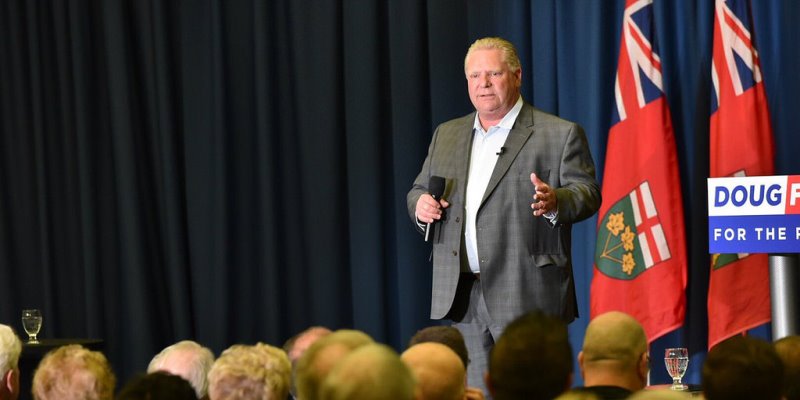Ford rejects Harris spending approach and follows path of Wynne and Rae

In the early 1990s, Ontario’s finances were on perilous footing as large deficits persisted and debt was growing quickly. Mike Harris campaigned in 1995 on a promise to oversee a “common sense revolution” that would reform and reduce government spending to stop the bleeding and return the province to balanced budgets and surpluses.
Harris had his critics at the time and still has them to this day, but he made good on this promise. Over the course of seven years in office, the Harris government reduced spending (after adjusting for population growth and inflation) at an average annual rate of 1 per cent, with the largest reductions made up front early in his tenure. These spending reductions were sufficient to balance the budget. Ontario went from having some of its largest deficits in history in the early-1990s to a small surplus by the end of the decade.
In 2018, Doug Ford’s Progressive Conservative Opposition ran on promises similar to those made by Harris more than 20 years earlier—to reduce spending to get the province’s finances back on track after years of rapid debt accumulation. But unlike Harris, Premier Ford has not followed through on the commitment to fundamentally change the way the province spends money. Indeed, spending has increased under Ford’s watch.
The province’s operating budget did return to a small surplus last year, but this was largely due to an unexpected revenue surge. The Ford government, which will table its next budget March 23, has certainly not followed the Harris approach and, as such, deficits will likely reemerge without future revenue windfalls.
So if Ford hasn’t approached government spending like Harris, who has he emulated?
Well, the best answers from the last few decades are former premiers Kathleen Wynne (Liberal) and Bob Rae (NDP). Like Ford, both Wynne and Rae took office facing significant fiscal challenges. In both cases, their governments chose not to take ambitious efforts to reform and reduce spending to solve the problems but largely pursued “status quo” approaches to spending, holding inflation-adjusted spending levels close to those they inherited.
According to a new study published by the Fraser Institute, this is similar to the approach the Ford government has taken—except the Ford has actually been more dovish on government spending, overseeing inflation-adjusted spending growth that has significantly exceeded both Wynne’s and Rae’s.
Due to the Ford government’s decision to continue to crank up spending, Ontario is now approaching an all-time high in inflation-adjusted spending per-person. In 2021, the most recent year of available data, Ontario saw spending levels that were nearly identical to those that prevailed during the big-spending government of Dalton McGuinty. In 2021, Ford spent more than McGuinty did in any year except for 2010, in the immediate wake of the 2008/09 financial crisis.
Premier Ford’s decision to reject the Harris approach to government spending and embrace the Rae/Wynne strategy shows that party labels often don’t tell us much about how a party will govern once it takes office. Canadian history is littered with Progressive Conservative governments that have spent freely, and Liberal and NDP governments that have held the purse strings tightly. Ontario’s history over the past 30 years is one of the clearest illustrations of this pan-Canadian reality.

